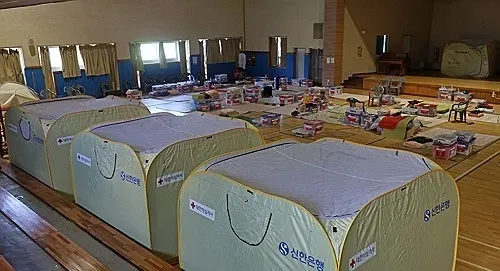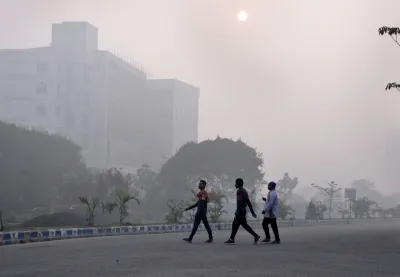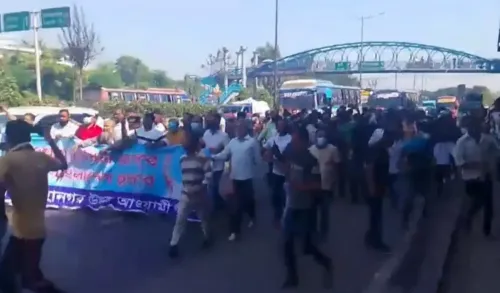What is the Latest on South Korea's Rising Death Toll Due to Heavy Rains and Landslides?

Synopsis
Key Takeaways
- Death toll has risen to 19 due to heavy rains.
- Nine individuals are still missing.
- Government has mobilized resources for recovery.
- Special disaster zones have been declared.
- Over 14,000 people have sought shelter.
Seoul, July 22 (NationPress) The tragic aftermath of last week's heavy rainfall and landslides in South Korea has resulted in the confirmation of another fatality, bringing the total number of deceased to 19, according to the government on Tuesday.
Additionally, nine individuals remain unaccounted for, which escalates the total of those either deceased or missing due to the severe weather conditions from Wednesday to Sunday to 28, as per preliminary reports from the interior ministry.
The fatalities include 10 in the southern county of Sancheong, three in the northern county of Gapyeong, and two in the western city of Seosan, as reported by the ministry.
Among the missing, four are reported from Sancheong and another four from Gapyeong.
In response to the disaster, recovery operations have accelerated, with approximately 2,976 of the 6,752 damaged buildings and facilities already undergoing urgent restoration efforts, as stated by Yonhap news agency.
Over 14,000 individuals have sought shelter since the onset of the intense rains, and 2,549 people are still awaiting the opportunity to return home.
On July 21, President Lee Jae Myung directed government officials to quickly designate the flood-affected areas as special disaster zones to enhance rescue and recovery initiatives and offer assistance to the impacted communities.
During his visit, Lee instructed Interior and Safety Minister Yun Ho-jung to utilize all accessible resources and administrative support for those affected, while also promptly designating the flood-stricken regions as special disaster zones, as reported by presidential spokesperson Kang Yu-jung.
Being classified as special disaster zones allows for governmental support aimed at damage recovery and victim relief.
The South Korean Army has deployed around 2,500 military personnel and equipment to the badly affected areas to aid in recovery efforts.
Approximately 2,500 emergency personnel and 20 pieces of equipment have been dispatched to the southwestern city of Gwangju, parts of South Chungcheong Province, and South Gyeongsang Province since Thursday, according to Army reports.
The focus of the recovery efforts has been on restoring homes and businesses affected by the flooding, which includes soil removal and the organization of household items, as stated by the Army, which will continue to support recovery initiatives.









